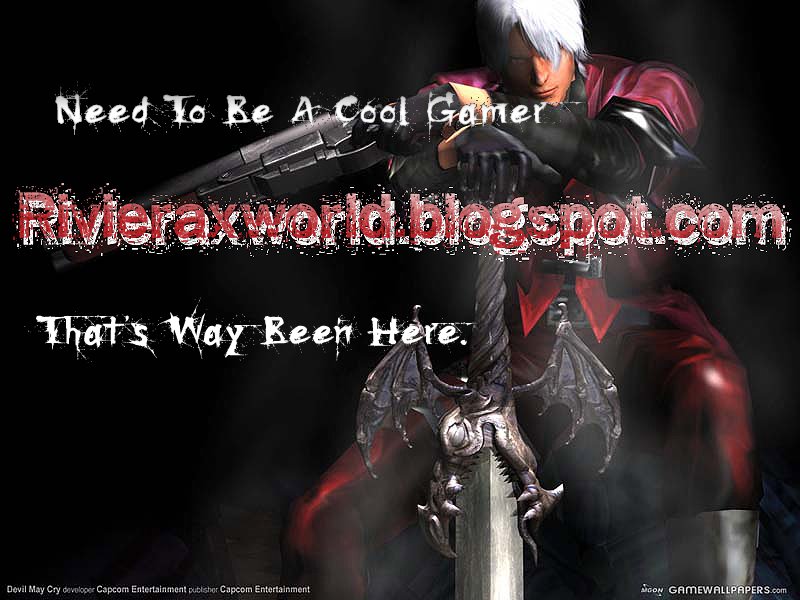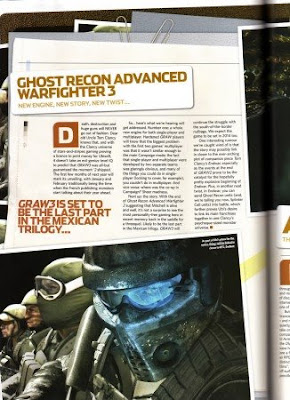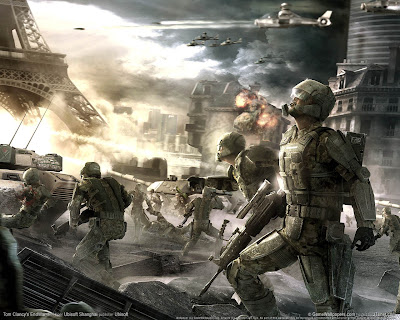Dragon Age: Origins has a lot to live up to, considering its predecessors Baldur's Gate and Neverwinter Nights. Executive producer Dan Tudge explains how the new game will stack up.
Dragon Age: Origins is the next role-playing game from BioWare and will tell an epic story in a dark-fantasy world. Although the studio became a premiere console-game developer with 2003's Star Wars: Knights of the Old Republic for the original Xbox, it really made a name for itself years earlier with the epic computer role-playing games Neverwinter Nights and the Baldur's Gate series, dating back to 1998. Yet the studio is determined to take all of the best features of its past games and make an even better, more-evolved role-playing game. Executive producer Dan Tudge explains.
GameSpot: We understand that Dragon Age: Origins is intended to be the spiritual successor to BioWare's best fantasy role-playing games, such as Baldur's Gate and Neverwinter Nights. What was it about those games that you definitely wanted to capture in Dragon Age?
DT: Fans who loved the rich story, interesting characters, and tactical combat in the deep fantasy setting of Baldur's Gate and Neverwinter Nights will love what we're doing in Dragon Age: Origins. We're capturing the same great spirit of story, exploration, tactical combat, and character progression that we delivered in those previous titles and bringing it to a dark, heroic fantasy setting. We've taken a lot of what we learned from creating Baldur's Gate and Neverwinter Nights to make Dragon Age: Origins even better, so fans can expect a lot of what they enjoyed about those games, but with next-gen improvements.
GS: Both Neverwinter Nights and Baldur's Gate had long-running stories that spanned multiple games/expansion packs. Over the course of those stories, not only did players' characters become stronger, the characters and world around them changed: key characters died, and allies became traitors. How does the story in Dragon Age compare?
DT: BioWare has always focused on delivering deep, story-driven experiences, where your actions and choices have meaningful consequences. We're taking that even deeper with Dragon Age: Origins by introducing a new feature called "origin stories." You start the game by choosing and then playing through the origin story of your choice. You start off in a unique place in the gameworld, which sets up the way you become a Grey Warden and flavors the rest of the game in terms of your motivations, how you perceive the world, and how the world perceives you. Your choices will open up different story branches, dialogue options, affect how other characters treat you, and change the state of the Dragon Age world by the end of the game. Compared to our previous titles, the story and scope of Dragon Age: Origins is the most ambitious of any BioWare game yet.
GS: While most RPG fans enjoyed the Baldur's Gate and Neverwinter Nights games, some hardcore players complained that the ethical alignment system wasn't completely balanced--for instance, some characters didn't truly play to their alignments, and also that playing an evil character wasn't nearly as fleshed-out an experience as playing a good character. How will these issues be addressed in Dragon Age?
DT: You can choose which type of hero or antihero you want to be, meaning that it won't always be clear which decisions are "good" and which are "evil." You'll face a lot of tough moral decisions along the way, and sometimes you may have to make seemingly evil decisions for the greater good. The choices in Dragon Age: Origins are not always black and white, but rather, shades of gray. The important thing to remember is that every choice you make will have a consequence. For example, there is a "party approval" system where members of your party may disagree with certain choices you make. If you keep making decisions that they don't like, they may get angry with you, or even leave your party.
GS: Those previous fantasy games were also known for having addictive, hack-and-slash gameplay with plenty of engaging tactical combat. What lessons have you learned from those previous games' battles, and how will they be applied to Dragon Age?
DT: Dragon Age: Origins uses a party-based tactical combat system that is really a next-gen evolution of "pause and play." The action is fast and happens in real time, so if you like to just get in there and hack-and-slash your way through your enemies, you can do that, but you will quickly learn that you will need to think much more tactically if you want to survive. With the pause-and-play system, you can pause the action, issue a string of robust commands to your party members, and then jump right back into the action. You'll have full control of each party member, so you'll have a lot of different abilities and attacks at your disposal, including magic and spell combos. You have a lot of control over the camera, too. You can zoom out to a tactical view so you can see all your enemies and direct your party, and you can zoom in so you're right in the thick of the action. That's where you'll want to be when you land a punishing death blow!
GS: Another highly addictive aspect of games like Baldur's Gate and Neverwinter Nights was their character-advancement systems, which, for veteran players, led to a sort of advancement metagame. Not only did players enjoy playing and advancing their characters, they'd also compare, plan, and strategize about exactly how they'd develop their characters--which items they'd eventually use, whether they'd change classes using the Dungeons & Dragons dual-classing system, and so on. How will character development in Dragon Age compare? Will there be any analogs to dual-classing, for instance?
DT: Character progression has always been a core pillar of every BioWare game. In Dragon Age: Origins you will choose your player's race, gender, class, customized appearance, special abilities, and of course your origin. Players will develop their skills, talents, and spells to support their style of play. Do you want to create a healing mage, a dual-weapon-wielding rogue, or a sword-and-shield tank? As their characters advance, players can also choose a class specialization that will unlock advanced talents and spells.
GS: The Baldur's Gate and Neverwinter Nights series also had memorable companion characters that joined you on your quest, and opened up opportunities not only for backup in battle, but also side quests and even romances. How will party relations be expanded in Dragon Age?
DT: The party-approval system plays a big role in the dynamic between you and your party members. Make decisions they agree with, and they'll follow and support you. Make decisions they despise, they may turn on you. Each character has a very unique personality making them enjoyable to interact with. However, it is their interaction with each other that I find most entertaining. There are romances you can choose to pursue or not, and you can also forge strong alliances, friendships, or even betray those around you, with different consequences for your actions. Don't forget that your choice of origin story also heavily influences the relationships you'll have throughout the game.
GS: And again, one of the most addictive qualities of those games for advanced players was taking that top-down look at the games and their characters and planning out party composition and party side quests in advance. How much of that element will we see in Dragon Age? How will the pool of joinable characters be expanded to accommodate a wide variety of play styles, such as the players who want to play a party with nothing but evil characters, or the players who want to play through the game with only two characters in the party, and so on?
DT: You can have up to four members in your active party (including yourself), but you'll be able to swap out members of your party for others throughout the game. Each character not only has their own unique set of skills and abilities, but they also have their own unique personalities and behaviors, which may or may not complement your style of play. You'll meet a lot of different characters along the way, so there will be plenty of opportunities to try out different compositions of party members, each with their own unique advantages or disadvantages. It makes for a lot of great replayability, too. And for those who want, you can play the entire game in tactical view just like Baldur's Gate.
GS: And those games ended up living long, productive lives past their shelf date thanks to toolsets and modifications. How malleable will Dragon Age be at launch with regard to users modifying and creating their own content? What specific plans do you have postlaunch to further extend the game's life with expanded toolsets or other community-focused content-creation tools?
DT: We'll be announcing more details of the Dragon Age Toolset very soon, but for now I'll tell you that we can't wait for the community to get their hands on the new toolset. We really wanted to empower our fans with the ability to create their own next-gen adventures within the Dragon Age universe, so they can expect a lot of great things they can do with scripting, cinematics, objects, and so on. And of course, we at BioWare will provide lots of support on our community site. We do have some very cool plans for downloadable content, but we'll be talking more about that later.
GS: Finally, is there anything else you'd like to add about the way you hope Dragon Age will stack up against the Baldur's Gate and Neverwinter Nights games?
DT: A big difference between Dragon Age: Origins and our previous fantasy games is that Dragon Age is our own original dark-fantasy universe. It's a completely new world that BioWare designed from the ground up, with its own deep history and lore, so fans will see things that they haven't seen before in other fantasy games. It's also the darkest and grittiest game we've ever made. It's intended for a mature audience, so if you're looking for a fun, sophisticated game with a page-turning story set in a huge dark-fantasy universe, this is the one for you. It's BioWare fantasy role-playing at its finest, and you may even be shocked by some of the things you'll see...!
GS: We can't wait...! Thanks, Dan.
Credit: Staff,Gamespot.com




















































